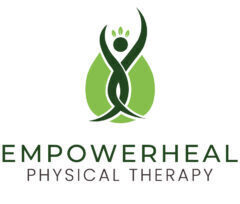
Pelvic Floor Therapy and EDS physical therapy serving Bethesda and Washington DC surrounding metropolitan areas
Hypermobile Ehlers-Danlos Syndrome (hEDS) is a genetic connective tissue disorder that causes joint hypermobility, chronic pain, fatigue, and frequent joint subluxations or dislocations. People with hEDS often struggle with stability, coordination, and muscle support — making exercise feel intimidating or even harmful.
But the truth is, with the right guidance, exercise is one of the most effective ways to manage hEDS symptoms. The key? Working with a hypermobility specialist near you who understands the condition inside and out.
If you have hEDS, typical workout plans may not be appropriate. Many traditional exercise routines can overstretch your already lax joints or lead to injuries. That’s why working with a hypermobility-informed physical therapist is so important.
You don’t need to stretch more — your joints are already hypermobile. Instead, focus on stability exercises that strengthen muscles around the joints, helping to prevent subluxations and injuries.
The deep core muscles and pelvic floor play a key role in joint stabilization. Strengthening these muscles improves balance, posture, and pelvic health. Many hEDS patients benefit from pelvic floor physical therapy, especially if experiencing prolapse, incontinence, or pelvic pain.
These exercises protect your joints while building strength safely.
Many people with hEDS experience post-exertional fatigue. Start slow, rest often, and track your body’s response. A custom plan from a hypermobility specialist in Bethesda can help you find your ideal pace.
Not all physical therapists or fitness coaches understand hypermobility and EDS. A true hypermobility specialist knows how to:
Yes — but only when tailored to your body’s unique needs. Working with a hypermobility specialist ensures exercises are safe, supportive, and protective of your joints.
Physical therapists who specialize in EDS, connective tissue disorders, and joint hypermobility. Our team in Bethesda is trained in hypermobility-specific care and pelvic health therapy.
Yes. Many people with hEDS experience pelvic floor dysfunction, prolapse, or sexual pain. Pelvic floor physical therapy addresses these concerns through gentle, targeted interventions.
If you’re ready to take control of your body and start moving safely again, our Bethesda clinic is here to help. Our expert team understands the challenges of living with hEDS and will work with you every step of the way.
📍 Located in Bethesda, MD, we serve patients with hypermobility, chronic pain, pelvic floor dysfunction, and more.
We specialize in treatment and management of people with hypermobility spectrum disorders (EDS/hEDS).